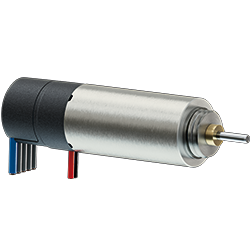DC Servo Motor Sizing Made Easy: A Practical 1/2 Day Course presented by Jan Braun, maxon motor ag
This half-day seminar provides the practical information you need to successfully select the right DC motor -- be it brushed or brushless -- for your application. You'll learn about the interpretation of motor data and how you can use this information for motor sizing. Whether you need high speed and dynamics or just high torque, this seminar will teach you to size a motor + drive with just the right power reserves, avoiding costly oversized motors.
Location/Date:
St. Laurent, PQ
Tuesday February 19, 2013
Location/Date:
Radisson Plaza Mississauga- Toronto Airport
Mississauga, ON
Wednesday February 20, 2013
Time:
9:00 am -2:00 pm Lunch included
Price:
$89 CDN/person + HST* (*Ontario Only; Quebec registrants will be charged 5% GST only) if pre-registered by midnight January 31st ; after February 1st the cost is $109 CDN/person + applicable taxes.
To Register:
Visit www.electromate.com or call us at 877-737-8698 with your credit card information
This half-day seminar provides the practical information you need to successfully select the right DC motor - be it brushed or brushless servo - for your application. You'll learn about the interpretation of motor data and how you can use this information for motor sizing. Whether you need high speed and dynamics or just high torque, this seminar will teach you to size a drive with just the right power reserves avoiding costly oversized motors.
What You'll Receive:
Textbook: "The selection of high-precision microdrives" (a $65 US value) -- A complete, easy-to-read reference guide for motor and drive selection OR you'll receive an $89 Can. voucher to be used towards your next Maxon order (voucher expires Dec. 31, 2013)
maxon Formulae Handbook
E-Learning Software Tutorial on USB Stick
maxon Catalog
What You'll Learn:
Basics of DC motor data. Learn how to interpret motor data sheets and use the speed-torque line information for optimum motor sizing.
Systematic drive selection in the context of your application specific requirements and boundary conditions. This includes optimum power management, control loops, accuracy and ambient conditions.
Basics of gearhead data and their impact on motor selection.
Selection criteria for DC motors. Topics include the characteristics of different commutation types for brushed and brushless DC motors and when to use them.
maxon selection program. Find out how this software-tool can help you in the motor selection.
Application examples. Learn how to extract the key parameters for drive selection from your application: The examples include continuous operation as well as dynamic operation cycles.
Motion Control: The main features and application possibilities of maxon EPOS and ESCON controllers.
Agenda
09.00 - 09.45 Motor selection: What is it all about?
- The context of motor selection
- Application and situation analysis
- Extracting key load parameters
09.40 - 10.10 Properties of brushed and brushless DC motors
- Design variants
- Brush systems
- Electronic commutation systems
10.10 - 10.20 Coffee break
10.20 - 10.50 Motor data sheets
- Characteristic motor lines
- Operation ranges
10.50 - 11.30 Motor selection examples:
- Continuous operation
11.30 - 11.40 Coffee break
11.40 - 12.30 Motor selection examples:
- Cyclic operation
- maxon selection program demonstration
12.30 - 13.00 Lunch break
13.00 - 14.00 EPOS and ESCON Systems
- System architecture
- Introduction EPOS family
- Introduction ESCON family
- Demonstrations, Examples
Featured Product

FAULHABER MICROMO - Impressive accuracy through the latest chip technology
With the launch of the IEP3, FAULHABER expands its product line with an incremental encoder which, thanks to the latest chip technology, achieves a very high resolution and accuracy. With a diameter of just 8 mm, the IEP3 is very lightweight and compact yet still offers a resolution of up to 10,000 lines per revolution - made possible by the latest chip technology with high interpolation. In the standard version, the resolution is freely programmable from 1 - 4,096 lines per revolution. Moreover, the chip technology that is used ensures a high positional accuracy of typically 0.3 °m as well as a high repeatability of typically 0.05 °m thanks to accuracy compensation.
